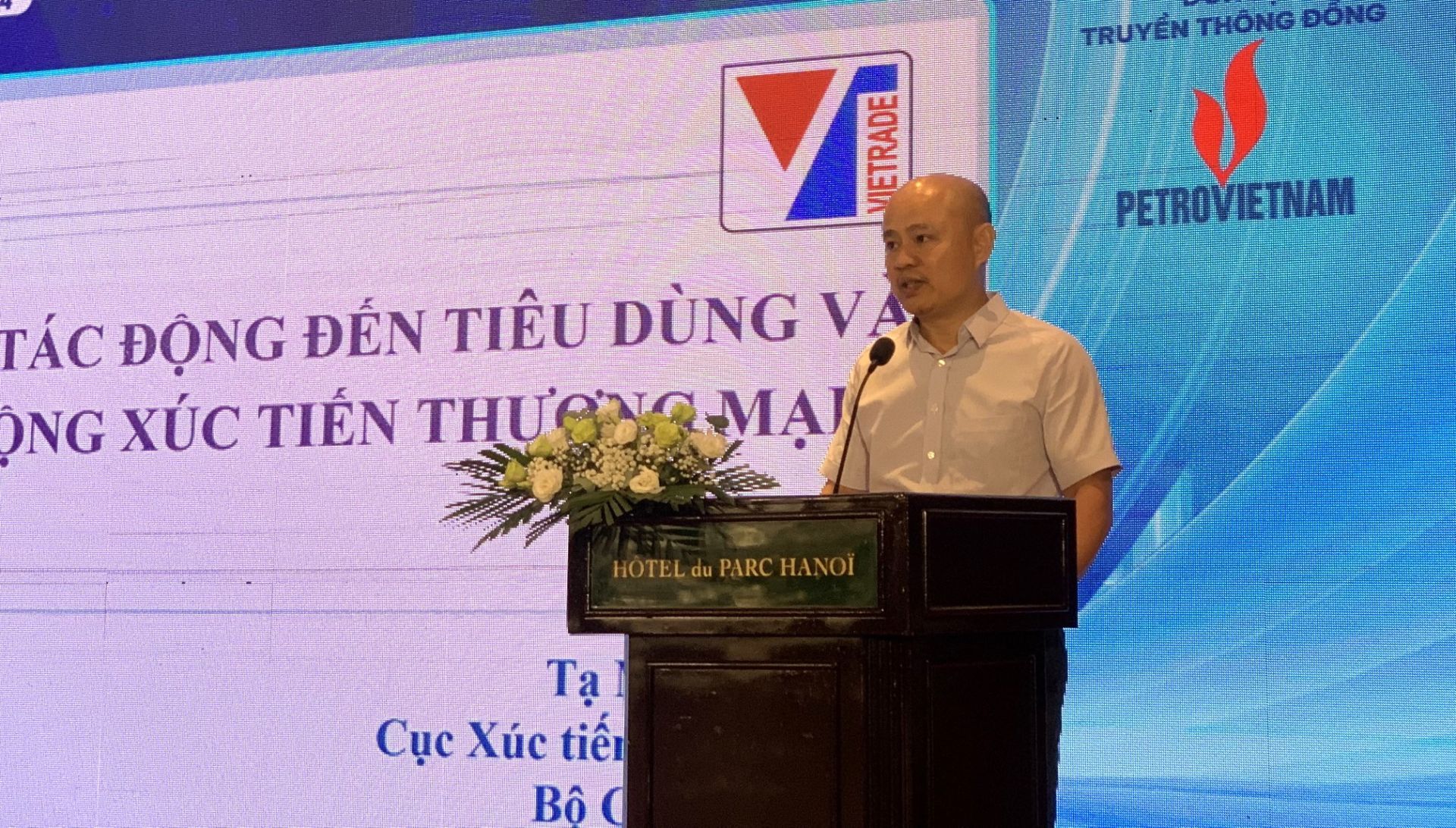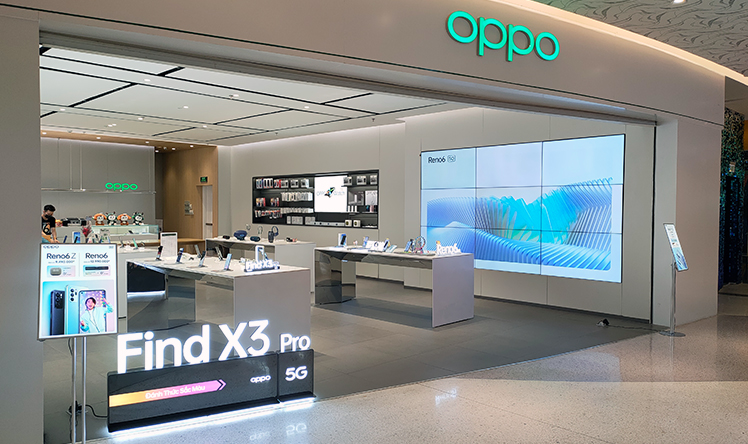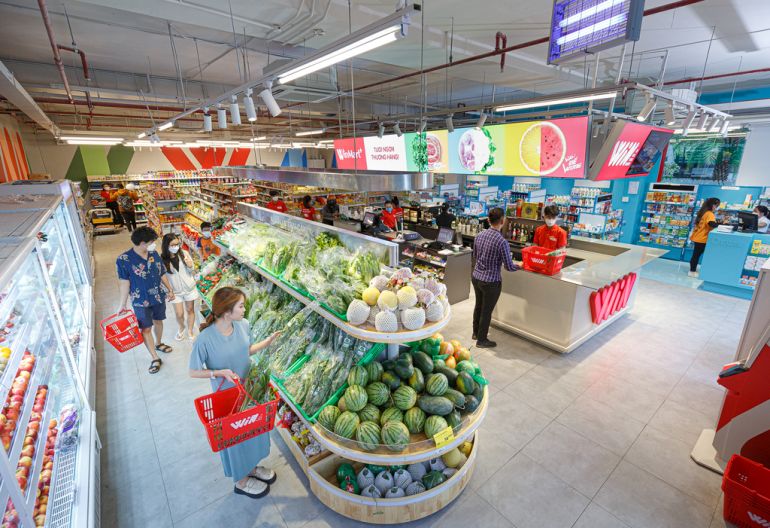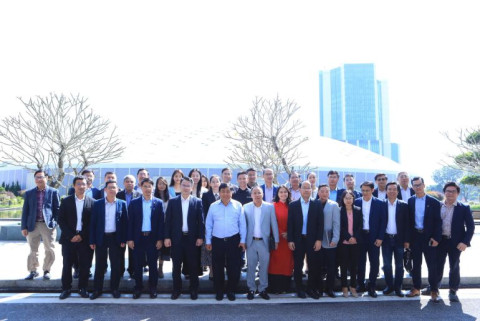Capturing consumer trends: Key to increasing competitiveness in retail
- 125
- Business
- 10:36 01/07/2024
DNHN - Changes in consumer spending are presenting challenges and fluctuations, forcing businesses to adapt their strategies to better engage consumers, provide appropriate solutions, and create customer satisfaction.

Vietnamese consumers tighten spending
In a volatile environment, understanding consumer needs and shopping habits, as well as predicting and keeping up with consumer trends, has become increasingly challenging for businesses. Staying updated with market research data and analyzing changes in consumer behavior can help companies find the right solutions, thereby enhancing competitiveness and achieving success.
According to data from the General Statistics Office on May 29, total retail sales of goods and consumer service revenue in May 2024 slightly decreased by 0.1% compared to the previous month due to reduced consumption and travel demand after a long holiday.
The total retail sales of goods and consumer service revenue at current prices in May 2024 was estimated at 519.8 trillion VND, up 9.5% compared to the same period last year. Notably, food and foodstuff increased by 9.9%; household goods and equipment by 9.0%; apparel by 9.3%; accommodation and catering services by 17.0%; and travel services by 34.3%.
In difficult economic conditions, Vietnamese consumers are making significant adjustments, such as reducing unnecessary spending, limiting purchases, or changing their spending methods to manage with a tighter budget. These changes pose many challenges and require businesses to adjust their strategies to effectively engage consumers and provide suitable solutions.

At the "Vietnam Consumer Trends" forum organized by the Institute of Brand Strategy and Competition Research (BCSI) on June 19, Ms. Dang Thuy Ha, Director of Customer Behavior Research at NielsenIQ Vietnam, noted that consumers are reducing spending from short-term to long-term. Specifically, 66% of consumers chose to cook at home in Q3 2023, compared to 60% in Q4 2023, and 62% in Q1 2024. Additionally, 50% reduced purchases of luxury items, and 31% postponed major expenses.
Remarkably, to cope with rising costs, consumers are seeking online deals to cut down on grocery expenses and prioritizing physical and mental health.
“Businesses need to be flexible, quickly adapt, innovate, and reassess their business strategies to align with current consumer needs and trends”, Ms. Thuy Ha suggested.

Ms. Nguyen Phuong Nga, Director of Kantar Vietnam's Business Division, pointed out that it has become increasingly difficult for brands not only to retain consumers but also to attract them. Post-Covid-19, consumers have developed new shopping habits, reducing the frequency of shopping but using more channels, with an increased average spending per trip. The shopping frequency has decreased by 15% compared to the pre-Covid period.
This shift makes customer attraction and loyalty more challenging for businesses due to less frequent consumer interactions.
Ms. Thuy Ha remarked, “Vietnamese people have many concerns, such as economic growth, job security, and pollution. Nearly 40% of Vietnamese consumers are cautious with spending due to uncertainties ahead. Despite positive economic signals, consumers still have many worries. How do they manage spending and save? In fact, 94% have changed their shopping habits in fast-moving consumer goods. Additionally, saving electricity and reducing unnecessary household expenses help manage family budgets. These are prominent trends in Vietnamese consumer behavior, similar to trends in the Asia-Pacific region, where consumers prioritize online shopping for savings.”
In recent years, retail channels have shifted from traditional to modern online platforms, especially in urban areas. Modern specialty stores have also seen significant growth. Mother-and-child chains and health and beauty stores have expanded, leading retail growth overall.
Despite efforts in communication and store expansion, major retailers face significant challenges in customer retention. A report by Kantar indicates that the market share of the top five modern retailers, Co.op Mart, Central Retail, Winmart, Bách Hóa Xanh, and Winmart+, has been gradually decreasing over the years.
Experts at the forum agreed that retail businesses face many challenges in optimizing supply chains, pricing, and adapting to online business trends, which create competitive pressures.
The rise of modern shopping options offers more choices for consumers, making it challenging for brands to keep up with all trends, customer behaviors, and technological advancements.
The boom of E-commerce
At the forum, Mr. Ta Manh Cuong, Head of Trade Promotion Department, Ministry of Industry and Trade, emphasized that the shift in shopping channels from traditional to modern online platforms, especially in urban areas, presents both opportunities and challenges for businesses.

To survive and thrive, Cuong suggested that businesses need to understand domestic and international consumption regulations, identify trends and behaviors by product category, and design and develop new products that meet consumer preferences.
Ms. Nguyen Phuong Nga added that despite significant improvements, five out of ten consumers believe that Vietnam's economy is struggling and that this situation will last at least six months to a year. Consequently, Vietnamese consumers increasingly view seeking online deals as an effective way to reduce grocery expenses. Thus, businesses should focus on leveraging e-commerce channels to boost sales.
Ms. Thuy Ha highlighted that e-commerce is growing due to increased internet usage and improved logistics systems. More international logistics companies are entering Vietnam, and local companies are investing heavily in domestic development. Consumers seek savings and convenience, which drives e-commerce growth, with an annual increase of around 30%. Initially, e-commerce was limited to sectors like travel, education, and apparel, but now fast-moving consumer goods are widely available online, indicating that nearly everything, including cars, can be sold online.
Beyond e-commerce, digital transformation is crucial for retail growth, according to Mr. Le Hung Cuong, representing FPT Digital. Businesses must find ways to retain loyal customers by changing shopping methods, enhancing convenience, providing unique experiences, and focusing on product quality and sustainability.
“Developing new technologies and embracing green transitions offer opportunities for comprehensive transformation, such as data-driven hyper-personalization to help customers understand their needs and investing in AI to promote virtual shopping”, Mr. Cuong concluded.
Bao Bao
Related news
#Retail sales

The special appeal of large-scale shopping centers in Vietnam
Large-scale shopping centers in Vietnam are not just shopping destinations but also ideal places for entertainment and dining. This success comes from continuous investment and upgrades, creating a perfect experience environment.

Retail sales of goods, services up in May
Vietnam saw strong growth in its revenue from retail sales of goods and services in May 2022 due to an increase in tourism demand after the pandemic is basically under control and the 31st SEA Games was successfully held in the country in mid-May.

E-commerce in 2025: Explosive opportunities amid fierce competition
E-commerce in Vietnam continues to grow rapidly but faces intense competition and rising costs, forcing businesses to optimize strategies and technologies to maintain profitability.

Digital transformation in the retail industry – Towards sustainable development
The retail industry is entering the digital age. For sustainable development, businesses need to effectively combine digital technology with sustainable development goals.

Oppo surpassed Samsung for the first time to lead Vietnam's smartphone market share
Recently, Oppo has gradually established itself not only as a popular brand but also as a formidable competitor to major names.

Profit in the second quarter of 2024 of Masan exceeds the whole year of 2023
Masan Group Corporation (HOSE: MSN) announced the unaudited financial report for the second quarter of 2024.
Đọc thêm Business
From New Year messages of World Leaders to the “new rules” of the Global economy in 2026
At a pivotal moment of transition, New Year messages from capitals such as Hanoi, Beijing, Washington and Paris reflect distinct priorities and strategic visions.
Connecting Leaders, Shaping the Future: Strategic Leadership Planning Meeting – CorporateConnections Hanoi A
"Your network is your most powerful flowing asset. It generates value, multiplies opportunities, and accelerates your influence across borders."
Innovative ESG enterprise: Trạm Xe Việt startup proposes solutions to build a green mobility ecosystem
As Vietnam commits to achieving Net Zero by 2050 and tightens emissions standards, the transportation sector faces unprecedented pressure to transform.
Deputy Prime Minister Nguyễn Chí Dũng: “The country’s major challenges weigh heavily on my mind — and we must resolve them together.
On the morning of November 26, 2025, Deputy Prime Minister Nguyễn Chí Dũng chaired a high-level working session at the National Innovation Center (NIC) in Hòa Lạc.
Unitsky String Technologies signs cooperation agreements with three Vietnamese partners, opening a new direction for smart mobility and sustainable development
The signing ceremony took place in Minsk, Belarus, on November 28, 2025.
Before the D‑day to abolish flat‑rate tax: Fear of technology and costs leave small traders struggling to adapt
From 1 January 2026 the flat‑rate tax regime will be abolished. Small business households will be required to declare tax based on actual revenue. MISA supports the transition with technology to help micro‑merchants adapt smoothly and transparently.
Vietnamese enterprises at a crossroads: the impact of a potential US–China deal
As the world closely monitors every shift in US-China relations, emerging signals of a strategic agreement between the two global powers are raising hopes for global economic stability.
HDBank: Impressive profit growth, leading in profitability and advancing international integration
Ho Chi Minh City Development Joint Stock Commercial Bank (HDBank, stock code HDB) announced its consolidated profit before tax for the first 9 months of 2025 reached VND 14,803 billion, marking a 17% increase year-on-year (YoY).
TNI King Coffee sued for over VND 5 Billion in unpaid debts
On October 21, 2025, the People’s Court of District 10 in Ho Chi Minh City officially accepted a civil lawsuit concerning a commercial contract dispute between TKT Vietnam Plastic Packaging Joint Stock Company and TNI King Coffee Co., Ltd.
VINASME and Jeonnam Technopark Sign MOU on technology cooperation, human resource training, and trade promotion
On October 15, 2025, in Hanoi, VINASME and Jeonnam Technopark (Korea) signed an MOU to promote trade, advance technology transfer, and develop human resources between enterprises of both nations.











